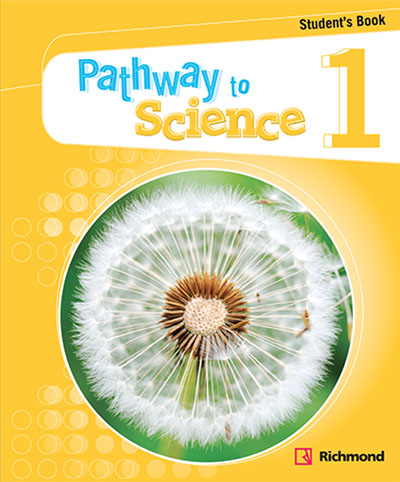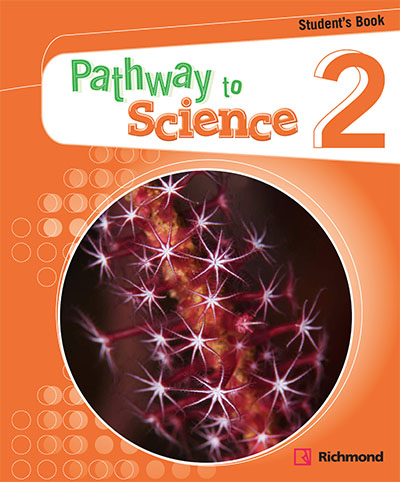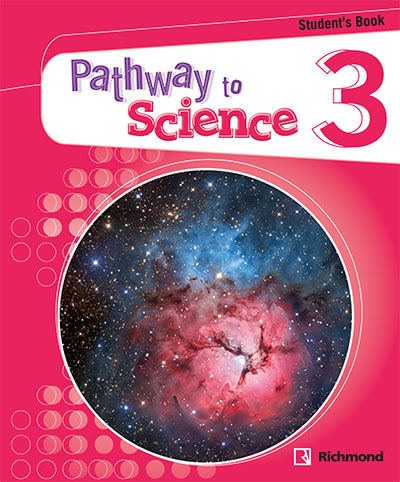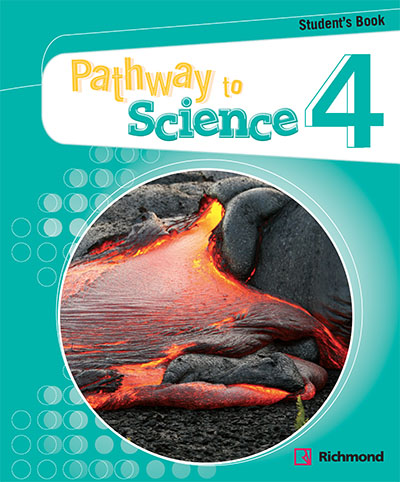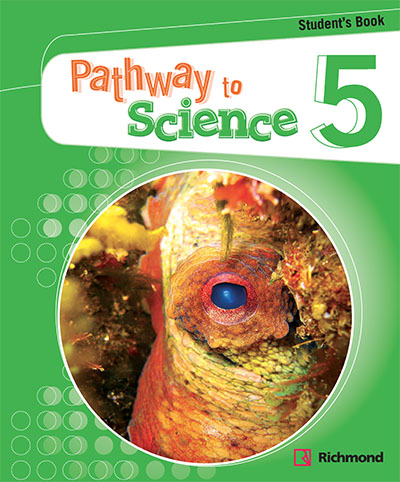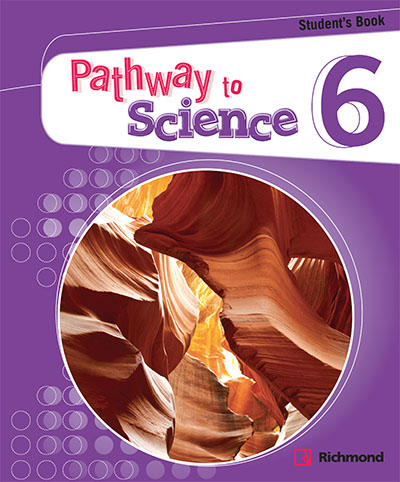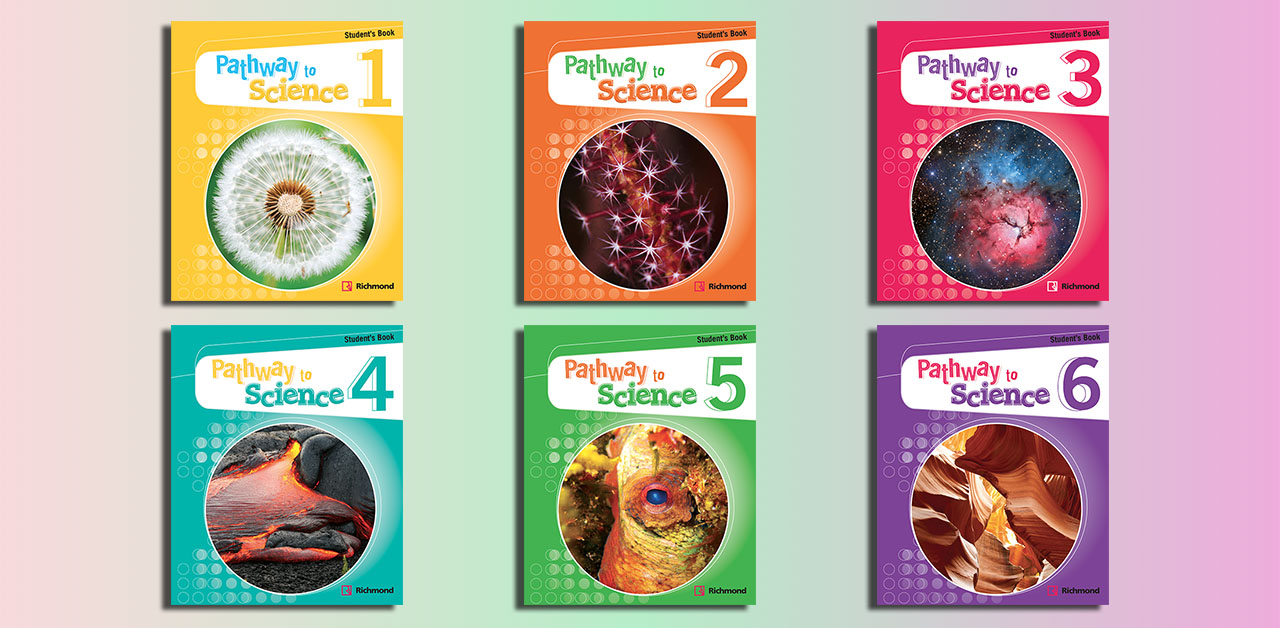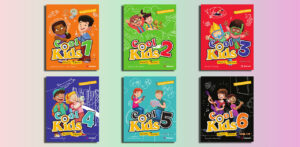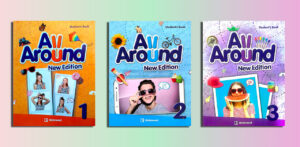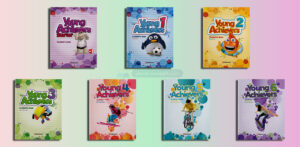Pathway to Science (PDFs, Resources)
Level 1
Pathway to Science 1 Audio.zip
Pathway to Science 1 Digital Book.zip
Pathway to Science 1 Resources.zip
Pathway to Science 1 Student’s Book.pdf – Sample: Click
Pathway to Science 1 Teacher’s Guide.pdf – Sample: Click
Pathway to Science 1 Video.zip
Level 2
Pathway to Science 2 Digital Book.zip
Pathway to Science 2 Resources.zip
Pathway to Science 2 Student’s Book.pdf – Sample: Click
Pathway to Science 2 Teacher’s Guide.pdf – Sample: Click
Pathway to Science 2 Video.zip
Level 3
Pathway to Science 3 Audio.zip
Pathway to Science 3 Digital Book.zip
Pathway to Science 3 Resources.zip
Pathway to Science 3 Student’s Book.pdf – Sample: Click
Pathway to Science 3 Teacher’s Guide.pdf – Sample: Click
Pathway to Science 3 Video.zip
Level 4
Pathway to Science 4 Audio.zip
Pathway to Science 4 Digital Book.zip
Pathway to Science 4 Resources.zip
Pathway to Science 4 Student’s Book.pdf – Sample: Click
Pathway to Science 4 Teacher’s Guide.pdf – Sample: Click
Pathway to Science 4 Video.zip
Level 5
Pathway to Science 5 Audio.zip
Pathway to Science 5 Digital Book.zip
Pathway to Science 5 Resources.zip
Pathway to Science 5 Student’s Book.pdf – Sample: Click
Pathway to Science 5 Teacher’s Guide.pdf – Sample: Click
Pathway to Science 5 Video.zip
Level 6
Pathway to Science 6 Digital Book.zip
Pathway to Science 6 Resources.zip
Pathway to Science 6 Student’s Book.pdf – Sample: Click
Pathway to Science 6 Teacher’s Guide.pdf – Sample: Click
Pathway to Science 6 Video.zip
✅ Get Pathway to Science (PDFs, Resources + Digital Book): $8 / level; $38 / all 6 levels
๏ Other payment methods: Click here
Overview of the “Pathway to Science” by Richmond
Contents
| ✅ Coursebook: | Pathway to Science |
| ✅ Publisher: | Richmond |
| ✅ Levels: | A1, A2, B1 |
| ✅ English type: | American English |
| ✅ For: | Primary, Science |
| ✅ Publication year: | 2014 |
Pathway to Science by Richmond is a Content and Language Integrated Learning (CLIL) course designed for primary school students to develop science competencies while enhancing their English language proficiency. It serves as an ideal complement to general English courses, allowing students to apply their English skills in a scientific context while reinforcing science knowledge. Below is an overview based on available information:
Key Features
Hands-On Learning:
- The course emphasizes engaging, hands-on activities to foster practical understanding of scientific concepts. Each unit includes a Science Lab section with classroom experiments, helping students gain insights into the role of a scientist.
- Experiments are supported by videos featuring the Happy Scientist, Robert Krampf, which guide students through practical applications.
Scientific Method Focus:
- Students are introduced to the scientific method early on through a Scientific Research Skills Foldout, which helps them understand processes like observing, questioning, experimenting, and discovering.
- The course encourages critical thinking and practical application of scientific inquiry.
English Language Integration:
- Designed to improve English proficiency alongside science learning, the course integrates language skills with scientific content, enabling students to transfer English knowledge to another subject area.
- Includes an illustrated glossary of scientific terms to build vocabulary.
Enhanced Digital Edition:
- The Enhanced Digital Edition is an online-only version with fully interactive activities, integrated audio, and video content similar to podcasts. It aligns with the Mexican Ministry of Education’s 2017 program,
- Exploration and Comprehension of the Natural and Social World.
- Offers flexibility for students and teachers with digital resources, including worksheets tied to audio/video segments for pre-, during-, and post-activity engagement.
Assessment and Engagement:
- Features three evaluations per unit (initial, intermediate, and final) and regular Quiz Yourself sections to monitor progress.
- Includes stickers and cutouts for interactive learning experiences, making it engaging for young learners.
Curriculum Structure:
- Covers topics in Life Science, Physics and Chemistry, and Earth and the Universe, providing a broad foundation in science.
- The course is structured with clearly labeled sections to help students connect, practice, and summarize topics.
Pathway to Science 1 Student’s Book
Who is suitable for “Pathway to Science”?
Pathway to Science by Richmond is suitable for:
- Primary School Students: Designed for young learners, typically in elementary or primary school (ages 6–12), who are developing foundational science knowledge.
- English Language Learners: Ideal for students learning English as a second language, as it integrates science content with English language development through a CLIL (Content and Language Integrated Learning) approach.
- Bilingual Education Programs: Suited for schools with bilingual curricula, especially in English-Spanish contexts, where students apply English skills to science topics.
- Students Interested in Hands-On Learning: Perfect for those who benefit from interactive, experiment-based learning, with activities like Science Labs and engaging resources like videos and stickers.
- Teachers and Schools: Appropriate for educators seeking structured, teacher-friendly materials that align with science curricula (e.g., the Mexican Ministry of Education’s 2017 program) and support both science and language development.
The course caters to students who enjoy practical, inquiry-based learning and need to build scientific vocabulary and concepts while improving English proficiency.
Pathway to Science 2 Student’s Book
The benefits of “Pathway to Science”
The Pathway to Science course by Richmond offers several benefits for primary school students, particularly those in bilingual or English-language learning environments. Below are the key benefits:
Integrated Science and Language Learning:
- Combines science education with English language development through a CLIL (Content and Language Integrated Learning) approach, helping students improve their English proficiency while learning scientific concepts.
- Builds scientific vocabulary through an illustrated glossary, enhancing language skills in a contextual, meaningful way.
Hands-On, Engaging Learning:
- Promotes active learning through Science Lab experiments, fostering curiosity and practical understanding of science.
- Includes interactive elements like stickers, cutouts, and videos featuring the Happy Scientist, making learning fun and engaging for young learners.
Develops Scientific Inquiry Skills:
- Introduces students to the scientific method via a Scientific Research Skills Foldout, encouraging critical thinking, observation, questioning, and problem-solving.
- Helps students understand and apply scientific processes in a structured way.
Comprehensive Curriculum Coverage:
- Covers key science areas, including Life Science, Physics and Chemistry, and Earth and the Universe, providing a well-rounded foundation in science.
- Aligns with educational standards, such as the Mexican Ministry of Education’s 2017 program, ensuring relevance to school curricula.
Pathway to Science 3 Student’s Book
Flexible and Accessible Formats:
- Offers both print and Enhanced Digital Edition formats, with the latter including interactive activities, integrated audio, and video content for modern, tech-supported learning.
- Digital resources, like worksheets tied to audio/video, support pre-, during-, and post-activity engagement, catering to diverse learning needs.
Progress Monitoring and Assessment:
- Includes three evaluations per unit (initial, intermediate, and final) and Quiz Yourself sections to track student progress and reinforce learning.
- Provides clear feedback for students and teachers to assess understanding and skill development.
Teacher-Friendly Resources:
- Comes with a Teacher’s Guide, audio CDs, and activity cards, making it easy for educators to implement and adapt to classroom needs.
- Supports teachers in delivering engaging, structured lessons with minimal preparation.
Encourages Transferable Skills:
- Helps students transfer English language skills to another subject (science), promoting cross-disciplinary competence.
- Fosters collaboration, critical thinking, and creativity through group activities and experiments.
In summary, Pathway to Science benefits students by making science accessible and engaging while simultaneously improving their English skills. It equips them with critical thinking and inquiry skills, preparing them for further academic success in both science and language learning. For educators, it provides versatile, high-quality resources to support effective teaching.
Pathway to Science 4 Student’s Book
Effective learning strategies for “Pathway to Science”
To maximize the benefits of Pathway to Science by Richmond, which integrates science education with English language learning for primary school students, the following effective learning strategies can be employed. These strategies leverage the course’s hands-on, CLIL (Content and Language Integrated Learning) approach and its resources like Science Labs, videos, and interactive activities.
1. Active Engagement with Hands-On Experiments
- Strategy: Fully participate in the Science Lab activities and experiments provided in each unit. Follow the Scientific Research Skills Foldout to practice the scientific method (observing, questioning, hypothesizing, experimenting, and concluding).
- How to Implement:
- Prepare for experiments by reviewing related vocabulary in the illustrated glossary to build confidence with scientific terms.
- Watch the Happy Scientist videos actively, pausing to predict outcomes or discuss observations with peers or teachers.
- Record observations and results in a science journal to reinforce understanding and practice English writing.
- Why It Works: Hands-on activities make abstract concepts concrete, while writing and discussing in English enhance language fluency and retention.
2. Scaffolded Vocabulary Building
- Strategy: Use the course’s illustrated glossary and contextual learning to master scientific vocabulary in English.
- How to Implement:
- Create flashcards or mind maps for key terms in each unit, pairing words with visuals or definitions.
- Practice using new vocabulary in sentences or during group discussions about experiments.
- Play vocabulary games (e.g., matching terms to definitions or images) to make learning fun and interactive.
- Why It Works: Repetition and contextual use of scientific terms strengthen both language and content knowledge, critical for CLIL success.
3. Collaborative Learning and Peer Interaction
- Strategy: Engage in group activities and discussions to foster collaboration and reinforce both science and English skills.
- How to Implement:
- Work in small groups during Science Lab activities to share ideas, ask questions, and explain findings in English.
- Use the course’s stickers and cutouts in group projects to create visual representations of concepts (e.g., a model of the solar system for Earth and Universe units).
- Participate in role-plays where students act as scientists presenting their findings, practicing both scientific reasoning and English communication.
- Why It Works: Collaborative tasks encourage peer learning, boost confidence in using English, and deepen understanding through diverse perspectives.
4. Leveraging Digital Resources for Interactive Learning
- Strategy: Utilize the Enhanced Digital Edition’s interactive features, including audio, video, and online activities, to enhance engagement.
- How to Implement:
- Complete the digital worksheets tied to audio/video segments, focusing on pre-, during-, and post-activity tasks to build comprehension.
- Revisit videos or audio clips to reinforce concepts, pausing to take notes or answer Quiz Yourself questions.
- Use the digital platform’s interactive exercises to practice science and language skills in a self-paced environment.
- Why It Works: Digital tools cater to varied learning styles (visual, auditory) and provide immediate feedback, making learning more dynamic and accessible.
5. Regular Self-Assessment and Reflection
- Strategy: Use the course’s three evaluations per unit (initial, intermediate, and final) and Quiz Yourself sections to monitor progress and identify areas for improvement.
- How to Implement:
- After each evaluation, review incorrect answers with a teacher or peer to understand mistakes.
- Set personal goals for each unit (e.g., mastering five new vocabulary words or explaining a concept clearly in English).
- Reflect on experiments by summarizing what was learned in a short paragraph or discussion, connecting it to real-world applications.
- Why It Works: Self-assessment builds metacognition, helping students take ownership of their learning and stay motivated.
Pathway to Science 5 Student’s Book
6. Connecting Science to Real-World Contexts
- Strategy: Relate Pathway to Science topics (Life Science, Physics and Chemistry, Earth and the Universe) to everyday experiences to deepen understanding.
- How to Implement:
- Discuss how unit topics apply to real life (e.g., how plants grow in Life Science or weather patterns in Earth and the Universe).
- Encourage students to explore simple experiments at home (e.g., mixing safe household items to observe chemical reactions) with parental supervision.
- Use external resources like age-appropriate science websites or videos (with teacher guidance) to see real-world applications of concepts.
- Why It Works: Connecting learning to real-world contexts makes science relevant, sparking curiosity and reinforcing both content and language skills.
7. Structured Review and Repetition
- Strategy: Regularly revisit key concepts and vocabulary to ensure retention and build confidence.
- How to Implement:
- Create a weekly review schedule to revisit one unit’s key terms, concepts, or experiments.
- Use the course’s summary sections to consolidate learning at the end of each unit.
- Practice explaining concepts in English to a peer, teacher, or family member to reinforce understanding.
- Why It Works: Spaced repetition strengthens long-term memory, and verbalizing concepts in English improves fluency and confidence.
8. Parental and Teacher Support
- Strategy: Involve parents and teachers to reinforce learning outside the classroom.
- How to Implement:
- Teachers can use the Teacher’s Guide to share activity ideas with parents, such as discussing science topics at home in English.
- Parents can watch Happy Scientist videos with students and ask guiding questions to spark discussion.
- Teachers can provide extension activities (e.g., simple projects or quizzes) to keep students engaged beyond the classroom.
- Why It Works: Support from adults reinforces learning, provides encouragement, and creates a consistent learning environment.
Tips for Teachers and Students
- For Teachers: Use the Teacher’s Guide and audio CDs to plan lessons that balance science and language goals. Incorporate group work and digital tools to cater to different learning styles.
- For Students: Stay curious, ask questions during experiments, and practice English by describing what you see and learn. Use the course’s interactive elements (stickers, digital activities) to make studying enjoyable.
By combining these strategies, students can fully leverage Pathway to Science’s resources to excel in both science and English, while teachers can create a dynamic, supportive learning environment.
Pathway to Science 6 Student’s Book
Effective teaching strategies for “Pathway to Science”
1. Facilitate Hands-On, Inquiry-Based Learning
- Description: Use the Science Lab activities and Scientific Research Skills Foldout to guide students through the scientific method (observing, questioning, hypothesizing, experimenting, concluding).
- Implementation:
- Prepare materials for experiments in advance, ensuring safety and accessibility.
- Use the Happy Scientist videos to introduce experiments, pausing to discuss predictions and observations.
- Encourage students to record findings in a science journal, using English to describe processes and results.
- Benefit: Hands-on activities make science tangible, while writing in English reinforces language skills.
2. Scaffold Language and Content Integration
- Description: Support English language development alongside science concepts using the illustrated glossary and contextual activities.
- Implementation:
- Pre-teach key vocabulary before each unit, using flashcards or word walls.
- Pair students for peer teaching, where they explain terms or concepts in English.
- Integrate vocabulary into experiments by asking students to label diagrams or describe steps using glossary terms.
- Benefit: Builds scientific vocabulary and English fluency in a meaningful context.
3. Promote Collaborative Learning
- Description: Foster group work to enhance understanding and communication skills.
- Implementation:
- Organize students into small groups for Science Lab activities, assigning roles (e.g., recorder, materials manager).
- Use stickers and cutouts for collaborative projects, like creating models (e.g., a plant life cycle).
- Facilitate discussions where students share findings in English, encouraging active listening and feedback.
- Benefit: Collaboration builds teamwork, boosts confidence in using English, and deepens conceptual understanding.
4. Leverage Digital Resources for Engagement
- Description: Utilize the Enhanced Digital Edition’s interactive activities, audio, and video content to enhance learning.
- Implementation:
- Assign digital worksheets tied to audio/video segments for pre-, during-, and post-activity tasks.
- Use interactive exercises on the digital platform for in-class or homework reinforcement.
- Show Happy Scientist videos on a projector, pausing for questions or to connect to real-world applications.
- Benefit: Digital tools cater to diverse learning styles and provide immediate feedback, increasing engagement.
5. Use Structured Assessments for Progress Monitoring
- Description: Implement the course’s three evaluations per unit (initial, intermediate, final) and Quiz Yourself sections to track student progress.
- Implementation:
- Use initial evaluations to gauge prior knowledge and tailor lessons accordingly.
- Review intermediate and final evaluation results with students to discuss strengths and areas for improvement.
- Incorporate Quiz Yourself questions as warm-up or review activities to reinforce concepts.
- Benefit: Regular assessments provide clear feedback, helping teachers adjust instruction and students stay on track.
6. Connect Science to Real-World Applications
- Description: Relate Life Science, Physics and Chemistry, and Earth and the Universe topics to everyday life to make learning relevant.
- Implementation:
- Use examples like plant growth (Life Science) or weather patterns (Earth and the Universe) to connect to students’ experiences.
- Encourage simple, safe home experiments (e.g., observing shadows for physics) with parental guidance.
- Invite guest speakers or use online resources (with vetting) to show real-world science applications.
- Benefit: Contextual learning increases motivation and helps students see the value of science and English skills.
7. Differentiate Instruction for Diverse Learners
- Description: Adapt teaching to accommodate varied learning needs and English proficiency levels.
- Implementation:
- Provide visual aids (e.g., diagrams, videos) for visual learners and simplified instructions for lower English proficiency students.
- Offer extension activities, like advanced experiments or writing tasks, for high-achieving students.
- Use the Teacher’s Guide to modify activities for group or individual work based on student needs.
- Benefit: Differentiation ensures all students can access and succeed in the curriculum.
8. Encourage Parental Involvement
- Description: Engage parents to reinforce learning at home, enhancing the CLIL experience.
- Implementation:
- Share activity ideas from the Teacher’s Guide with parents, such as discussing science topics in English.
- Suggest watching Happy Scientist videos together and asking follow-up questions.
- Provide simple take-home tasks, like drawing a science concept or practicing vocabulary.
- Benefit: Parental support creates a consistent learning environment, reinforcing both science and language skills.
Tips for Implementation
- Plan Ahead: Use the Teacher’s Guide and audio CDs to streamline lesson planning and ensure alignment with science and language goals.
- Create a Positive Environment: Celebrate student efforts in experiments and English use to build confidence.
- Balance Content and Language: Dedicate time to both science concepts and English practice in each lesson to maximize CLIL benefits.
- Stay Flexible: Adapt activities based on student engagement and feedback, using the course’s resources to maintain interest.
These strategies align with Pathway to Science’s structure and resources, ensuring an engaging, effective learning experience.


